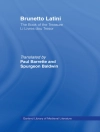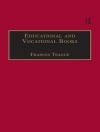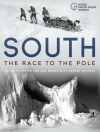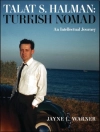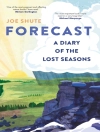Offers a comprehensive thematic introduction to a wide range of medieval writings about the outlaw-hero from a series of different historical perspectives.
By the fifteenth century, churchmen were complaining that laypeople preferred to hear stories about Robin Hood rather than to listen to the word of God. But what was the attraction of this outlaw for contemporary audiences?
The essays collected here seek to examine the outlaw’s legend in relation to late medieval society, politics and piety. They set out the different types of evidence which give us access to representations of Robin and his men in the pre-Reformation period, ask whether stories about the outlaw had any basis in reality and explore the many different purposes for which his legend was adapted.
The volume is divided into six parts: the sources for the medieval legend of Robin Hood and its origins; social structure; social conflict; kingship, law and warfare; piety and the church; and the outlaw’s legend in Wales and Scotland. Key issues addressed by its essays include the dating of the surviving tales, attitudes to social hierarchy, representations of gender and masculinity, the extent to which the tales drew upon or shaped contemporary attitudes towards law and justice, the development of Robin Hood plays and games, and whether the legend emerged from or appealed to particular social groups. It not only sheds new light on a character who, whether ‘real’ or not, is one of the most important and memorable figures in the history of medieval England but also explores the extent to which the outlaw became popular in Scotland and Wales.
Jadual kandungan
List of Illustrations
List of Contributors
Preface
Acknowledgments
A Note on References to Robin Hood Ballads and Plays
PART I: SOURCES AND ORIGINS
1. The Medieval Legend of Robin Hood: The English Sources – Stephen H. Rigby
2. Dating the Gest of Robyn Hode – Stephen H. Rigby
3. The Robin Hood Names and the Origins of the Outlaw Legend – David Crook
PART II: SOCIAL HIERARCHY AND SOCIAL ORDERS
4. Robin Hood: Social Hierarchy and Social Mobility – Alex T. Brown
5. Robin Hood: Yeoman Status and Yeoman Service – Louisa Foroughi
6. Robin Hood: Mercantile Hero? – Stephen H. Rigby
7. Robin Hood: Gender, Masculinity and Homosociality – Katherine Lewis
PART III: SOCIAL CONFLICT
8. Robin Hood: Social and Political Protest – Shannon Mc Sheffrey
9. Robin Hood: Social Bandit? – Stephen H. Rigby
PART IV: KINGSHIP, LAW AND WARFARE
10. Robin Hood: Kingship – Andrew Spencer
11. Robin Hood: Law and Justice – Anthony Musson
12. Robin Hood: Warfare and Weapons – Anne Curry
PART V: PIETY AND THE CHURCH
13. Robin Hood: Piety, Anticlericalism and the Church – Martin Heale
14. Robin Hood: Plays and Games – John Marshall
PART VI: WALES AND SCOTLAND
15. Robin Hood and the Welsh Outlaw Tradition – Helen Fulton
16. Robin Hood in Scotland – Helen Phillips
Appendix: Stephen H. Rigby, The Medieval Ballads of Robin Hood
Select Bibliography
Index
Mengenai Pengarang
Andrew M. Spencer is a Senior Tutor of Gonville and Caius College, Cambridge and Associate Lecturer of the University of Cambridge. He is a historian of politics and the constitution of England in the thirteenth and fourteenth centuries and has written extensively on the constitutional, political, military and social role of the nobility in particular.



